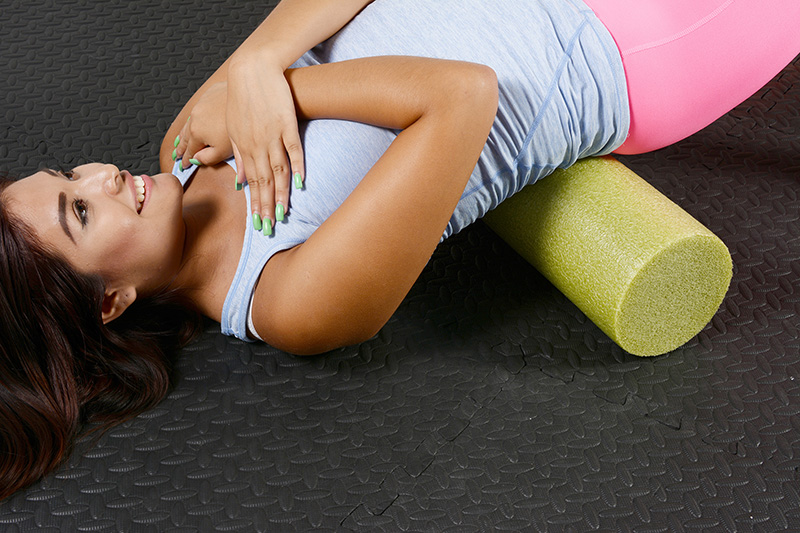
Our lack of flexibility becomes apparent when we reach a little too far for something or stride a little too long walking. Stretching and performing functional movements can improve flexibility, allowing our bodies to reach, step or turn a little farther than we once could. Stretching elongates muscle tissue, allowing your muscle fibers to lengthen and realign. When stretching is neglected, thick and thin filaments along the basic units of muscle tissue, called sarcomeres, cause your muscle/muscle fibers to tighten and become shorter over time. This decrease in muscle length eventually hinders your range of motion, which can then cause your daily activities to become more challenging.
Natural, fundamental movement patterns diminish as protective movements arise
Natural, pain free movement is achieved through a balance of stability and mobility producing a fundamental movement pattern. Fundamental movement patterns diminish as a response to pain, weakness, tightness or a structural abnormality. As the fundamental movement pattern diminishes, a protective movement typically arises to suppress that feeling of pain, often known as compensation. These protective movements frequently decrease a joint’s range of motion, strength and/or muscle length.
Maintain fundamental movement patterns through stabilizing & mobilizing joints & muscles
To maintain the fundamental movement patterns of the body, it’s important to stabilize and mobilize joints and muscles of the body to improve posture and mechanics for activities of daily living. When you stabilize your joints by strengthening the surrounding muscles and tissues, your joints are protected which prevents joint pain and injuries. Joint mobility, also known as joint range of motion, is just as important. Being able to move any given joint throughout its entire range of motion allows for proper mechanics which also helps prevent and reduce injuries.
What happens when posture is poor?
Poor stability and mobility can result in poor posture—when the shoulders rotate internally, the muscles of the chest, shoulders and neck tighten and decrease in length. This decrease in length causes the head to sink forward over the spine, pushing the head past its proper resting position. When the fundamental movement pattern of proper posture has been forgotten and a protective pattern is created, the neck and shoulders’ range of motion become severely compromised. Not-so-fun-fact: For every inch your head rests forward, past its proper resting position on your spine, the perceived load of your head on your spine doubles.
Valley Fitness Center’s Active Recovery class helps you improve/maintain functional movement
Valley’s Fitness Center offers a weekly Active Recovery class at noon on Thursdays. Each week, the class targets a specific area of the body (hips, spine or shoulders) to improve functional movements. This class includes:
- Dynamic warm up to increase your heart rate and get your blood pumping
- Myofascial release using foam rollers and lacrosse balls to loosen your tight muscles and knots
- Movements targeting specific joint’s full range of motion.
- Static proprioceptive neuromuscular facilitation (PNF) stretching for about 5 minutes
Learn more about the Fitness Center and group classes at  valleymed.org/fitness.
valleymed.org/fitness.
Carly Perkins is an Exercise Specialist at the Valley Fitness Center.

